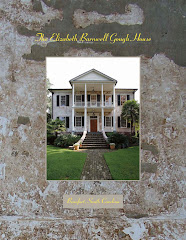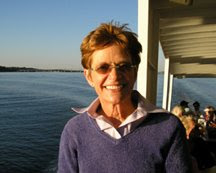
In 1849, Harriet Tubman fled the Eastern Shore of Maryland to make her way north to freedom. It was to become the first trip of many, as she returned repeatedly to lead others north. Her multiple trips conducting family and fellow slaves along the Underground Railroad eventually earned her the epithet of Moses and the friendship of many prominent abolitionists, including Frederick Douglas, Lucretia Coffin Mott, Franklin B. Sanborn and John Brown. It also brought her to the attention of Governor John Andrew of Massachusetts.
In January 1862, Governor Andrew – recognizing Tubman’s ability to slip in and out of Confederate territory undetected – made arrangements for her to travel to South Carolina to serve as a spy. Although small in stature, illiterate and handicapped by epileptic- like seizures (caused by a head injury she sustained while a slave), Harriet Tubman proved to be an important asset to the Union. On June 2nd of that year, she became the first woman to plan and lead a military raid behind Confederate lines. With 300 soldiers of Col. James Montgomery’s 2nd South Carolina Volunteers, she executed a brilliant and successful raid that destroyed millions of dollars worth of valuable Confederate stores and spirited away 800 slaves without a single injury to the 2nd SC Volunteers.
In July 1863, Tubman like many of the women in Beaufort and the Sea Islands, was called to nursing duty following the assault on Battery Wagner. From her we have one of the most descriptive accounts of the horrific conditions in the hospitals following the battle.
“I’d go to the hospital, I would, early every morning. I’d get a big chunk of ice, I would, and put it in a basin, and fill it with water; then I’d take a sponge and begin. First man I’d come to, I’d thrash away the flies, and they’d rise, they would, like bees round a hive. Then I’d begin to bathe their wounds, and by the time I’d bathed off three or four, the fire and heat would have melted the ice and made the water warm, and it would be as red as clear blood. Then I’d go and get more ice, I would, and by the time I got to the next ones, the flies would be round de first ones, black and thick as ever.” 19
Although no written record has as yet been found indicating at which hospital(s) Harriet Tubman served, what we do know points strongly to her presence at Hospital #10.
Many of the women who had been pressed into nursing service at the hospitals fell ill from the around the clock work in Beaufort’s heat and humidity and from the same diseases that took their toll among the soldiers. Among those affected at one point was Esther Hill Hawks.
We know that Tubman (apparently immune to the heat, exhaustion and diseases that felled other nurses) frequently stepped into posts vacated by ill nurses. Making speculation that Tubman may have served at Hospital #10 (either along side Hawks or during her absence) even more probable is an entry in the diary of Charlotte Forten.
A young, educated black woman from Philadelphia, Forten had come to Beaufort to aid in the Port Royal Experiment as a teacher. An entry from January 31, 1863 recounts the attempt she and Harriet Tubman made to call on Esther Hill Hawks, only to find that she was not in town at the time but at Fort Saxton with her husband. The wording of the entry suggests that it was not an attempt at an introduction but a simple social call, indicating that Hawks and Tubman were indeed acquainted.
Also pointing to her probable presence at Hospital #10 is Tubman’s connection with the Massachusetts 54th. Tubman was close friends with Frederick Douglass, who had campaigned for the forming of the regiment and had contributed two of his sons to its ranks. The regiment was also authorized by Governor Andrew, a sponsor of Tubman’s.
Tubman, like Douglass, was from the Eastern Shore of Maryland as were all of the slaves she had led to freedom. The black community, both free and slave, on the Eastern Shore of Maryland was uniquely mobile and interconnected. Slaves were frequently hired out to plantations often at some distance. Both free and enslaved blacks regularly worked side by side. The practice created broad circles of acquaintanceship, friendship and family in the Eastern Shore black community.
Many of the slaves Tubman led to freedom eventually settled in central New York state near where Harriet Tubman’s own family had settled in in the town of Auburn and where Harriet Tubman was a prominent figure in the black community. Frederick Douglass also actively conducted recruiting for the Massachusetts 54th in the area. It is reasonable to assume that Tubman would have had personal connections with many of the soldiers in the Massachusetts 54th, such as Charley Reason mentioned in Esther Hill Hawks’ diary. He had been a slave in Maryland before escaping and settling in Syracuse. Almost certainly Tubman would have known him as well as many of his fellow soldiers.
Although the large number of wounded from the Massachusetts 54th necessitated that multiple buildings around Beaufort be used as hospitals, given Tubman’s energy and devotion, it is hard to imagine that she never called on the wounded in Hospital #10.
Also adding to her probable presence at Hospital #10 is her close connection with the 2nd SC Volunteers whose wounded were also sent to Hospital #10. Tubman served with the 2nd SC Volunteers through the spring of 1864, earning praise from General Rufus Saxton, Col. Thomas Higginson and all who witnessed her courage and devotion.
After the war, she remained active in the black community and like many of the women in the abolitionist movement, she became a voice for women’s suffrage.
19Sarah H. Bradford, Scenes in the Life of Harriet Tubman, WJ Moses, Auburn, NY, 1869, as cited by Kate Clifford Larson, Bound for the Promised Land, Harriet Tubman Portrait of an American Hero, Ballantine Books, New York, NY, 2004, page 221
Please note that the material in this blog is copyrighted. It is not to be reproduced without my specific written permission.
.jpg)
